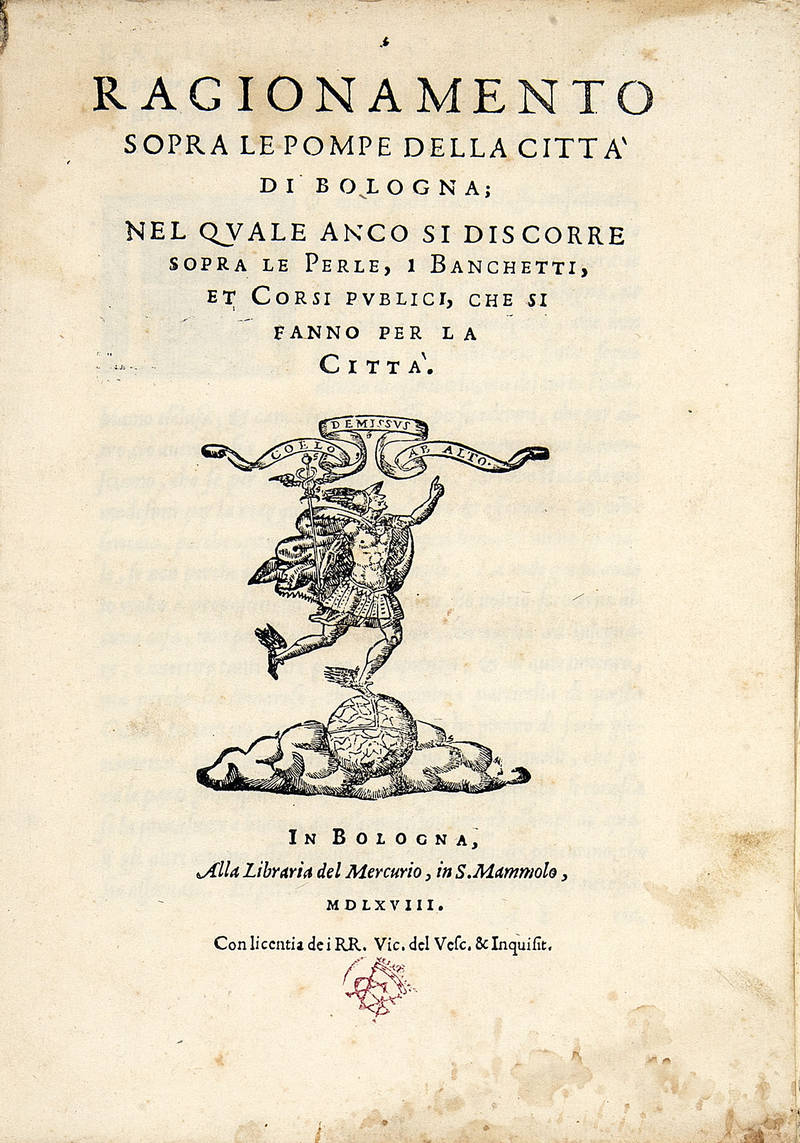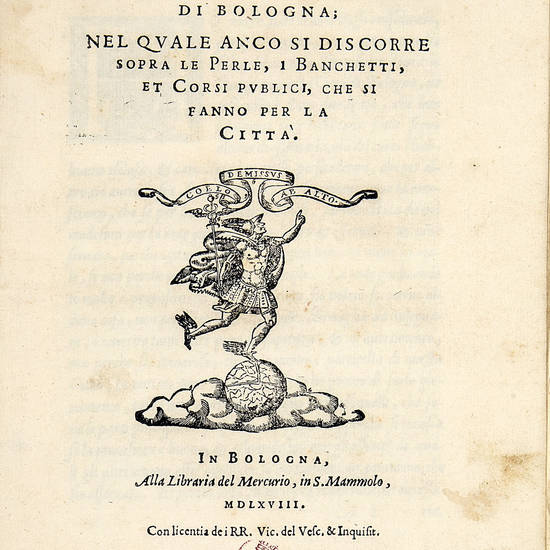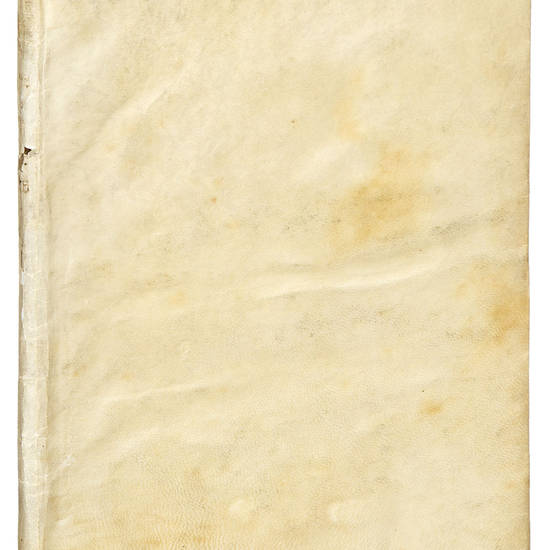4to (212x147 mm). [16] leaves. Collation: A-D4. Leaves D3v and D4 are blank. Giovanni Rossi's device on title page and leaf D3 recto. Contemporary flexible vellum (front panel detached from book block). On title page the stamp of the Albani Library. Some marginal foxing and staining. A very good, wide-margined copy.
RARE ORIGINAL EDITION (issue B) of this anonymous commentary (perhaps attributable to Cardinal Alfonso Paleotti) on the sumptuary laws promulgated by the city of Bologna. The author claims to have written this pamphlet in order to illustrate the legislation on luxury, as the rules, in his opinion, had been completely disregarded due to a lack of comprehension.
Sumptuary laws were rules aimed at regulating moral customs and daily life. Similar to police regulations, they were also aimed at regulating sexual and social behaviour. Until around 1530 the texts were kept in special hand-written registers. Later they were printed, at first on single sheets, then also in the form of booklets consisting of several pages. In particular, since 1568 the laws regulating clothes, gifts and feasts were reviewed at the initiative of Cardinal Gabriele Paleotti (cf. R. Campioni, Libri di merlette e disposizioni suntuarie nel secolo XVI: alcune indicazioni per l'Emilia Romagna, in: “Le trame della moda”, A.G. Cavagna & G. Butazzi, eds., Rome, 1995, pp. 125-149).
These laws were often triggered by a specific occurrence: after traumatic events like an earthquake or following proposals and complaints from the clergy (for example, regarding the cost of Carnival), the city council decided to issue a special law (or update an existing one) and commissioned a special committee to draft it.
The luxury laws, whose real application is not fully known, played a double role. On a social level, they establish consumption according to rank: the bourgeois did not have the right to wear clothes woven with gold and silver, or to possess pearls, or to buy valuable pottery, while the court and the aristocratic families belonged to an autonomous sphere of consumption and were dispensed from the rules. On an economic level, luxury legislation also served to limit waste (cf. M.G. Muzzarelli, ed., La legislazione suntuaria. Secoli XIII-XVI. Emilia-Romagna, Rome, 2002).
Edit 16, CNCE75515; Catalogo unico, IT\ICCU\UBOE\122246.
[6925]





